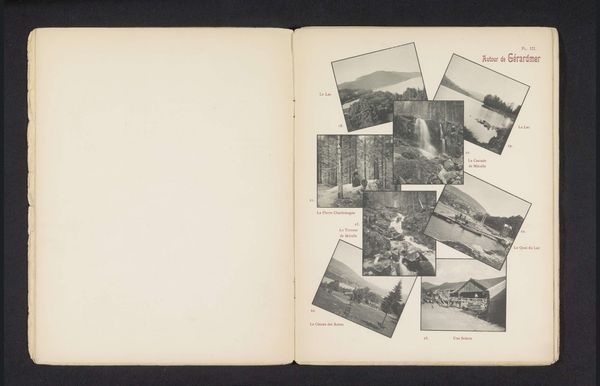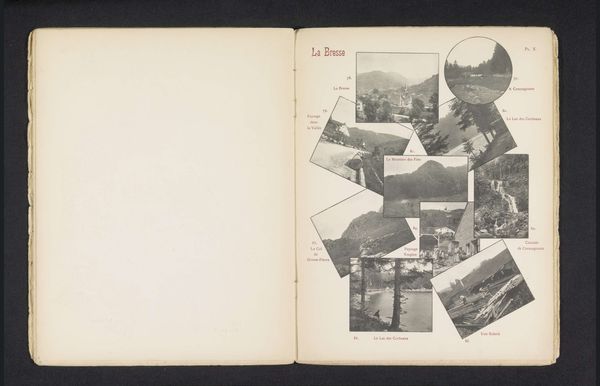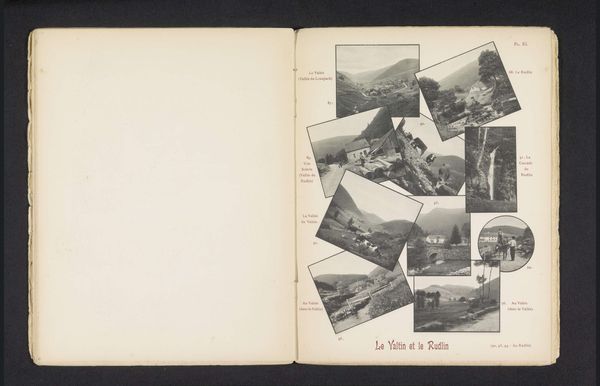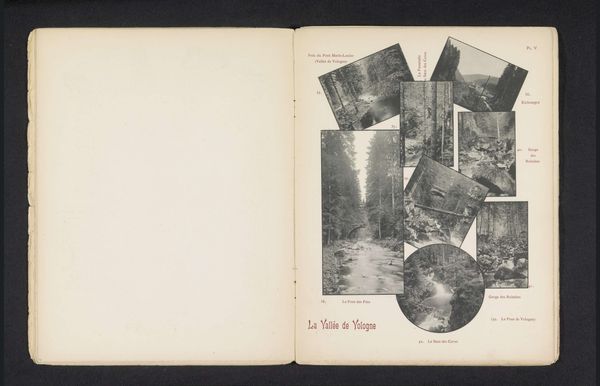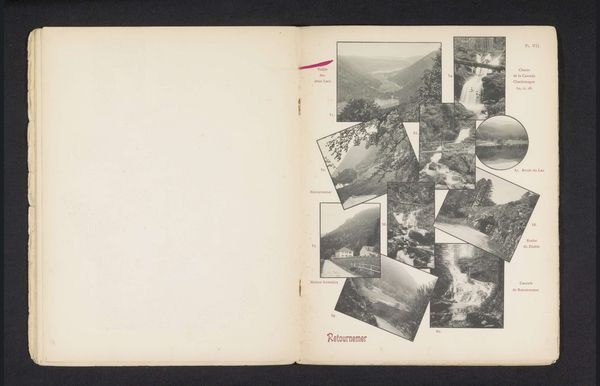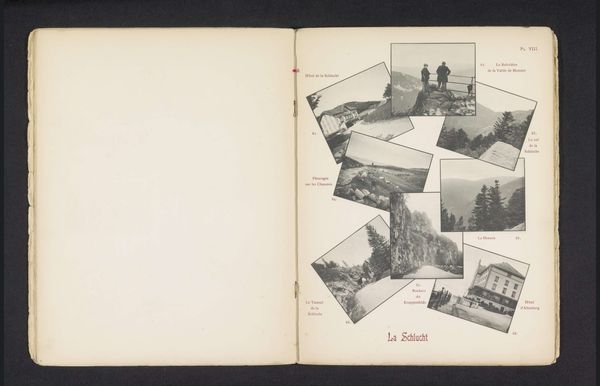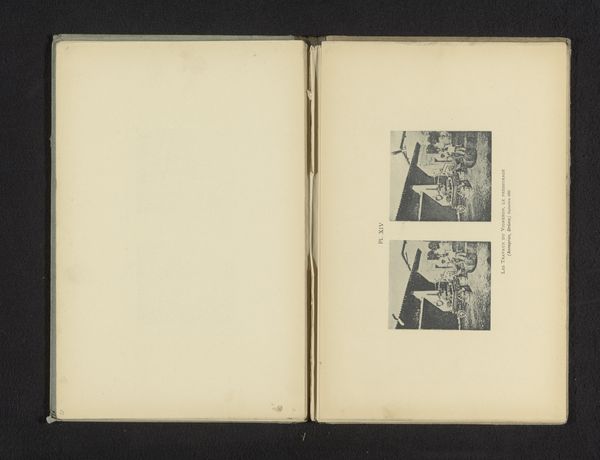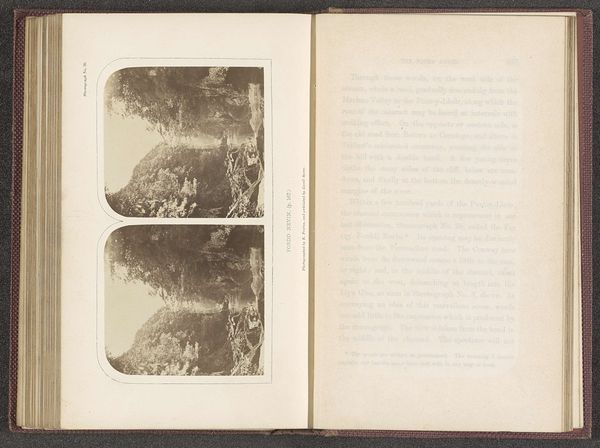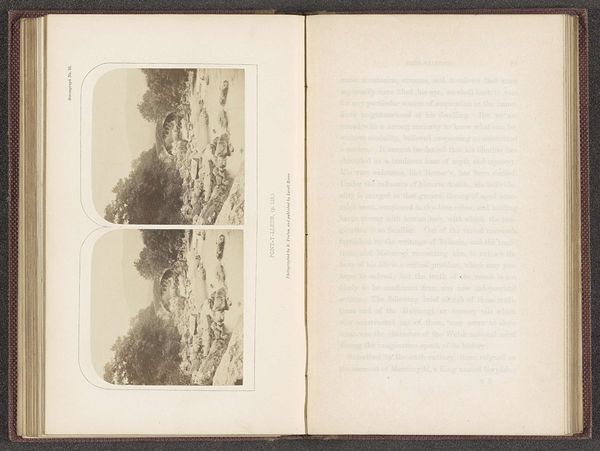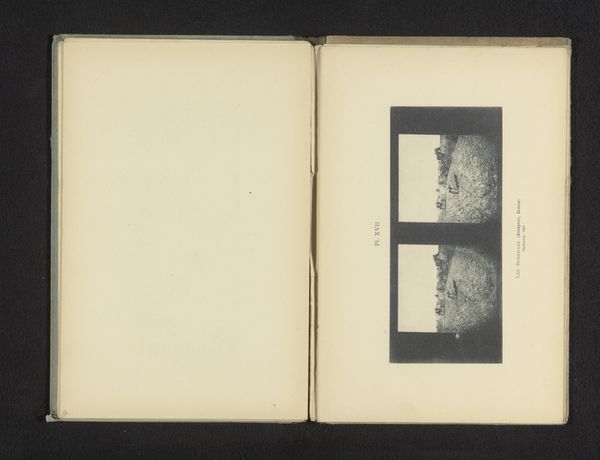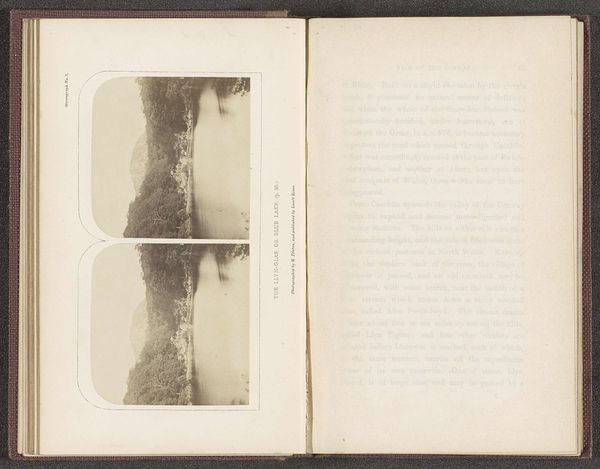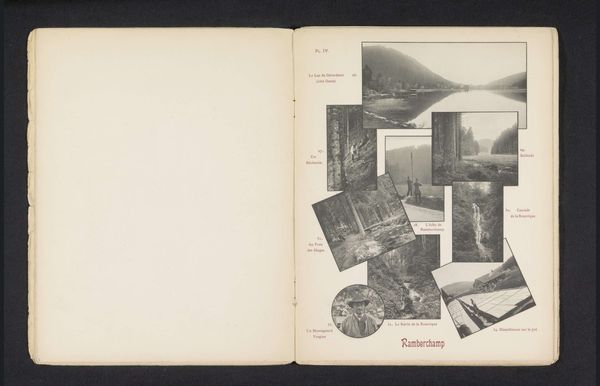
Dimensions: height 325 mm, width 250 mm
Copyright: Rijks Museum: Open Domain
Editor: So, here we have "Acht plekken in de omgeving van de Col de la Schlucht en Lac Blanc" - Eight places in the area of Col de la Schlucht and Lac Blanc - by A. Thiriat, dating from before 1898. It’s a print, using the albumen process, showing a series of landscape photographs, like a page from a travel album. I’m immediately struck by the material quality – that warm, sepia tone of the albumen print and how the images are arranged almost like a collage. What grabs your attention? Curator: For me, it’s how this work invites us to consider the social and economic conditions surrounding its creation and consumption. These albumen prints, made through a meticulous chemical process, speak to a growing accessibility of photography. Who was consuming these images of the Vosges mountains, and why? Editor: Perhaps wealthy tourists? Souvenirs from their travels? Curator: Exactly! These photographs aren't just capturing landscapes; they are commodities manufactured for a specific market. The collaged layout itself mimics the fragmented experience of travel, repackaging nature into digestible, picturesque views. Notice how the repetitive compositions contribute to the industrial feel of the art work? Editor: Yes, I see that now. It’s interesting how what seems like a romantic view of nature is actually part of a larger economic system. I hadn't considered the relationship between tourism and art in this way. Curator: Think about the labor involved in producing these images, from the photographer to the printing technicians. This "romantic" view relies on an infrastructure of production, shaping both the experience of the landscape and its artistic representation. This shifts our view, does it not? Editor: Absolutely. I’m now thinking about the accessibility and the commercialization of photography during this period, which influences the type of subject presented. Thank you, I've learned a lot. Curator: Likewise. It is important to look at not just the image, but at all factors that went into the final product.
Comments
No comments
Be the first to comment and join the conversation on the ultimate creative platform.
